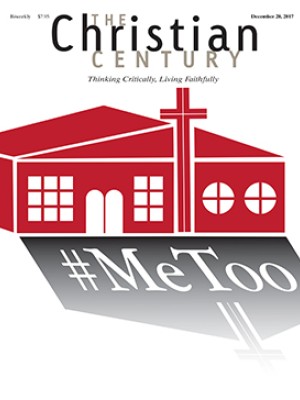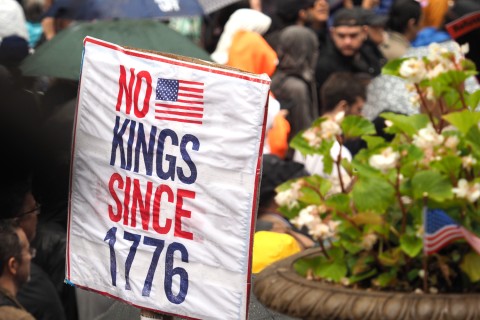The focus and function of The Witness of Preaching
Some of the book's strengths are also its limitations.
Read Roger Owens's article "The Witness of Preaching after three decades."
It’s true, as L. Roger Owens says, that The Witness of Preaching is a child of the heady days of the 1970s and ’80s when homiletics was gaining solid footing as an academic discipline. Not only were Ph.D. programs beginning to produce rigorously trained homiletical scholars, but a new understanding was emerging of practical theology as a generative field, with homiletics one of its disciplines.
Not everyone was convinced then—and doubters remain today—that homiletics (or any of the practical disciplines, for that matter) belongs in the academic club. As a doctoral student at Princeton Theological Seminary, I was once in the office of a dean filling out some routine paperwork when I heard the dean mutter, partly to me and partly to the atmosphere, that he couldn’t fathom how homiletics could be taken seriously as a doctoral-level discipline. This despite the fact that the corpus of scholarly literature in homiletics is older, far more voluminous, and at least as technically sophisticated as the literature in the dean’s own academic field.
Read our latest issue or browse back issues.
For him, homiletics was only about helps and hints, application and mere technique. He imagined homileticians twiddling their thumbs in the seminary lobby, waiting for the real scholars in theology, Bible, and ethics to hand over their results. Then the preaching professor could race off to figure out ways to popularize this scholarship in sermons, inserting catchy illustrations and bits of eloquence, figuring out how preachers could—as was said of the great revivalist preacher George Whitefield—pronounce the word Mesopotamia so beautifully it would bring listeners to tears. What this dean did not realize is that practical theology, including homiletics, was moving well beyond application and claiming its place as a constructive theological field. Yes, the performed event of preaching is a consequence of theological knowledge, and homiletics must attend to systematic theology. But it is also a source of theological knowledge, and systematics must pay heed to preaching.
In the 1970s and early 1980s, the Academy of Homiletics, the oldest North American guild in the discipline, was relatively small, with fewer than a hundred members, and able therefore to have common conversation and debate. At the time the academy was fascinated by hermeneutics and narration. Narrative preaching was ascending, and the members of the academy argued about narrative theory, literary criticism, structuralism, and the relative merits of this or that communicative structure. As I started writing Witness in the mid-1980s, it seemed to me that a basic preaching textbook ought to be the product of this scholarship and that the energy and creativity of these disciplinary debates should be reflected in its pages.
There is a dispute in homiletics, at least as old as Augustine, about how people best learn to preach. Is it through imitation or through instruction, through modeling oneself after gifted preachers or by learning from teachers in the classroom?
Augustine thought both, and so do I, but Witness is definitely a classroom book. In 1952, my professor, Donald Macleod, had edited Here Is My Method, in which 13 prominent preachers presented themselves as mentors to be imitated and described how they crafted their sermons. I did not want Witness to be that kind of book. I was more interested in the debates going on in the community of homiletical scholars than in the habits of tall-steeple preachers.
I also placed my chip down on one side of another debate about pedagogy, this one about whether the teaching of preaching ought to be learner-centered or learning-centered. The 1989 book Learning Preaching well expressed the learner-centered view: “Each of us has within us already the effective preacher God wants us to become.”
However uplifting that claim may sound, if followed to its conclusion it leads to disastrous pedagogy. No professor in law school or medical school would look out at beginning students and think that each one of them has within the little litigator or neurosurgeon they will become. No, there is a venerable and cumulative practice in law and medicine to which students need to be introduced, and I believe the same is true about preaching. An attentive teacher pays mind, of course, to each student’s gifts and aptitudes, but there is more to learning preaching than simply massaging the embryonic preacher within.
Another decision I made—and I think this is both a strength and a clear limitation of Witness—was to focus mainly on sermon infrastructure. In the same way that musicians, whether their style is bluegrass, classical, or hip-hop, still have to pay heed to chord structure and meter, so all Christian preachers, regardless of tradition, have to think about that which undergirds sermons, such as biblical interpretation, sermon form, and strategies for connecting the sermon to the listeners. The limitation here is that keeping one’s gaze on sermonic infrastructure can obscure some of the very aspects of preaching styles that make them most distinctive and compelling.
The African American student in Owens’s class who was critical of Witness because some important dimensions of the black preaching tradition are missing is absolutely right. Like Owens, I have always found it essential to supplement Witness with texts that reflect multiple preaching traditions and that transcend my emphasis on infrastructure, such as Cleo LaRue’s brilliant I Believe I’ll Testify: The Art of African American Preaching, Barbara Brown Taylor’s lyrical The Preaching Life, James Harris’s rhetorically sophisticated The Word Made Plain, and Jung Young Lee’s insightful Korean Preaching.
Owens echoes a criticism of Witness that has been made of all three editions, namely, that its range of conversation partners is too narrow. Again, this critique has merit. As a mild defense, I would point out that Witness does not pretend to be a homiletical encyclopedia. It is a beginner’s textbook about the basic building blocks of preaching. Sometimes worthy conversation partners are omitted simply because they’re talking about something else. But I confess that some potentially helpful contributions from other scholars are missing from Witness surely because of the limits of my vision and capacities. I stand where I stand, and alas, I cannot see all I wish I could see from that place.
Owens wonders if Witness sufficiently addresses the postmodern, post-church age in which we find ourselves, and heaven knows, so do I. All of us are scrambling to discern what voice preaching should take in this environment. In Confessing Jesus Christ, homiletician David Lose argues that postmodernity presses the act of bearing witness in the direction of confession. “Here is what I see” must move toward a bold “and here is what I believe.” Others are persuaded that in a missionary environment the teaching voice in sermons, somewhat muted by narrative approaches, needs to be refreshed. New and renewed forms of preaching are emerging, and we shall see where God is leading us. But I am convinced that what has been at the heart of Christian preaching since the women returned from the empty tomb will remain, namely, the astonished cry of the witness, “Something has happened! Everything has changed!”
The Witness of Preaching is in its third edition, and I suspect that will be the last. At my age, I am much more likely myself to be revised than the book is. The Academy of Homiletics has grown much larger, and when I look out and see the bright, dedicated, and very creative younger scholars populating the discipline, I rest easy.
A version of this article appears in the December 20 print edition under the title “Why I’ve focused on form and function: A response from Thomas G. Long.”





